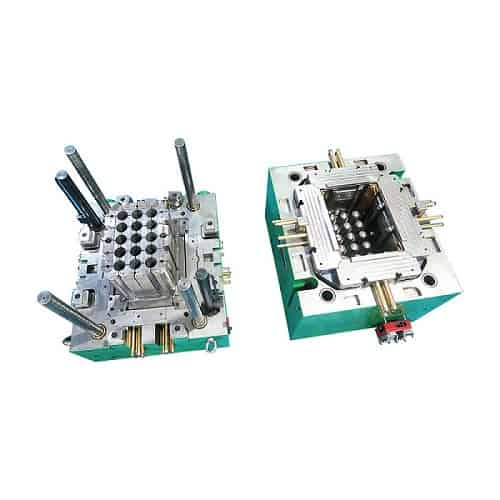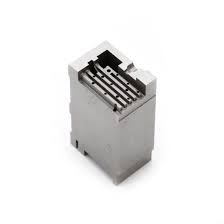An introduction to injection molding
The injection-molded products are actually present in every home, office, and business, etc.
In fact, manufacturers use many mold components in a plastic injection mold process to create several products. They use different materials such as metal, rubber, and plastic materials to produce items of their need.
The products like computer hardware, toys, and automotive parts like ball bearings, dashboard panels, and sparkplugs, and many, many more. Further, several outdoor picnic tables, chairs, and chaise lounges as well as implements like garden rakes have also been produced by using the molding process.
Hence, in this guide, we will learn about what is mold in manufacturing? As well as, what material is injection mold components made of? Moreover, what is the difference between casting and molding?
Therefore, stay tuned with us to get helpful information!
What exactly the injection molding is?
Basically, injection molding is a highly versatile method to produce different products. Further, it is extremely suitable for the mass production of products that have complicated shapes.
You can obtain molded products by injecting molten plastic materials into a mold, and then cooling and solidifying them.
Since plastic injection molding is an automated process so it helps to reduce manufacturing costs. It uses high pressure to create products. So, it is ideal for creating products having detailed features and complex geometry.
What is the difference between mold and mould?
Actually, mold and mould are the same words but their spelling is changed. It means a frame for shaping something. Moreover, British English to this word uses mould on the other hand Americans prefer mold.
What is the difference between casting and Molding?
Generally, molding is a special act of producing the cavity that carries a negative or reverse impression of an original model. However, mold and mold components can be produced using a rigid material, like plaster or plastic resin, or more commonly, flexible material such as rubber.
While casting is the process of pouring liquid material into the cavity of a mold. After a specific time period, this liquid will cure through chemical reaction or cooling.
The manufacturers usually use metals or various cold setting materials in the process of casting.
What is mold in manufacturing?
As we have already described that molding is a special manufacturing method. Moreover, it involves shaping a malleable or liquid raw material with the help of a fixed frame. This fixed frame is known as either a mold or a matrix.
Actually, a mold is a hollow cavity receptacle. The mold manufacturers generally use special metals to create mold.
In fact, mold is a very expensive piece of equipment that manufacturers use in the process of injection molding. It is just because of the complexity of the mold’s design that they can create complicated products.
Furthermore, it needs precise manufacturing methods and characteristics to assemble a functional unit.
What are mold components?
Basically, a mold needs several types of mold components that are useful in creating complex shapes. They are highly important as without them molding process can't be completed.
There are lots of high-quality mold accessories, standard parts, and non – standard processing.
Let's check out the 3 most popular categories of components that are highly important to use in molds. These are:
Ejector Pins:
- Straight Ejector Pins
- Stepped Ejector Pins
- Pusher Pins
- Free Flange-Position Ejector Pins
- Air-jet Valves
Core Pins:
- Steps-type Round Core Pins
- Straight Core Pins
- For Boss, Round Shank, Inlay Core Pins
- Taper less Core Pins
Leader mold components:
- Components for Ejector Space
- Components for Positioning
- Leader Components
What material are injection mold components made of?
Indeed, all molds and mold components are extremely important. So, mold manufacturers use hardened or pre-hardened steel, aluminum, and beryllium-copper alloy to preciously produce them.
Moreover, mold manufacturers often prefer to use hardened steel to make molds and their components. The steel molds cost a little more but actually are preferred because of their high durability.
The manufacturers usually design many kinds of steel molds and components to process well almost over a million parts during their lifetime. Further, for lower volumes, pre-hardened steel molds give a less wear-resistant as well as a less expensive option.
What is the best material for making mold and mold components?
Basically, silicone mold rubber and polyurethane mold rubber both are ideal options to use. Here we are describing to you in detail that each option has its own pros and cons when used to create molds and mold components.
So, let’s check out!
| Mold Rubbers: Pros & Cons | ||
| Type | Pros | Cons |
| polyurethane mold rubber | It has higher intensity and strength.
It also has a huge range of hardness. The polyurethane mold is cost-efficient. |
It is highly moisture-sensitive when it is in liquid form.
It needs a very careful application of the release agent. |
| Silicone rubber with platinum-cured | It doesn't need any release agent.
Silicone rubber doesn't shrink during cure. It is cured and hence has longer storage life. It has excellently chemical resistant. |
Silicone rubber with the platinum cure is high in cost.
Some surfaces may cure inhibited. |
| Silicone rubber with
tin-cured
|
It also doesn't need any release agent.
The silicone material is ideally chemical resistant. |
This material is also high in cost.
It shrinks up to ~1% during cure. This cured rubber has limited storage life. |
We hope that by reading this guide you can easily select the material to create mold components according to your needs.
What are the 6 important mold components?
Although there are several different types of mold parts. Further, all these components are essential to use in injection molding. But here we are presenting an introduction to functions of the 6 most important mold base components.
Fixed Clamping Plate:
It can tightly hold the fixed side of the mold to the fixed plate of the injection machine.
Fixed Cavity Plate:
It is greatly helpful to use when molders need to hold leader pin/bushing, the fixed cavity block as well as sprue bushing.
Movable Cavity Plate:
This part is beneficial to hold leader pin/bushing and the movable cavity block.
Ejector Retainer Plate:
This part can hold the return pins and the ejector pins in their place.
Ejector Plate:
The ejector plate actually pushes the return pins and the ejector pins at the same time. Moreover, it is mounted to the ejector retainer plate in order to make the ejector unit.
Support Pillars:
These support pillars are generally placed between the spacer blocks to give extra support to the movable cavity plate.
What are the main elements of Mold?
Read about the main elements of mold and mold components.
1. Register ring:
It actually helps to line up the injection molding machine screws with the injection mold. Further, it has generally been created by using medium carbon steel material (CHMCS) and case-hardened.
2. Sprue bushing:
Its bushing has a tapered hole of 3° to 5°. Moreover, it has generally made of CHMCS.
3. Top plate:
This part is beneficial to use to clamp the top half of the mold to the moving half of the molding machine. Further, it has usually been created by using mild steel.
4. Core plate:
It projects into the cavity place and also can create hollow portions in the plastic component.
This plate has designed using hardened hot die P20 steel without hardening after core machining.

5. Guide pillar and guide bushing:
These both important elements of mold components actually align the moving and fixed halves of a mold in each cycle.
These are only 5 main elements of mold parts. The rest of the essential parts of the mold are the cavity plate, ejector plate, ejector backplate, heel blocks, bottom plate, centering bush, rest button.






